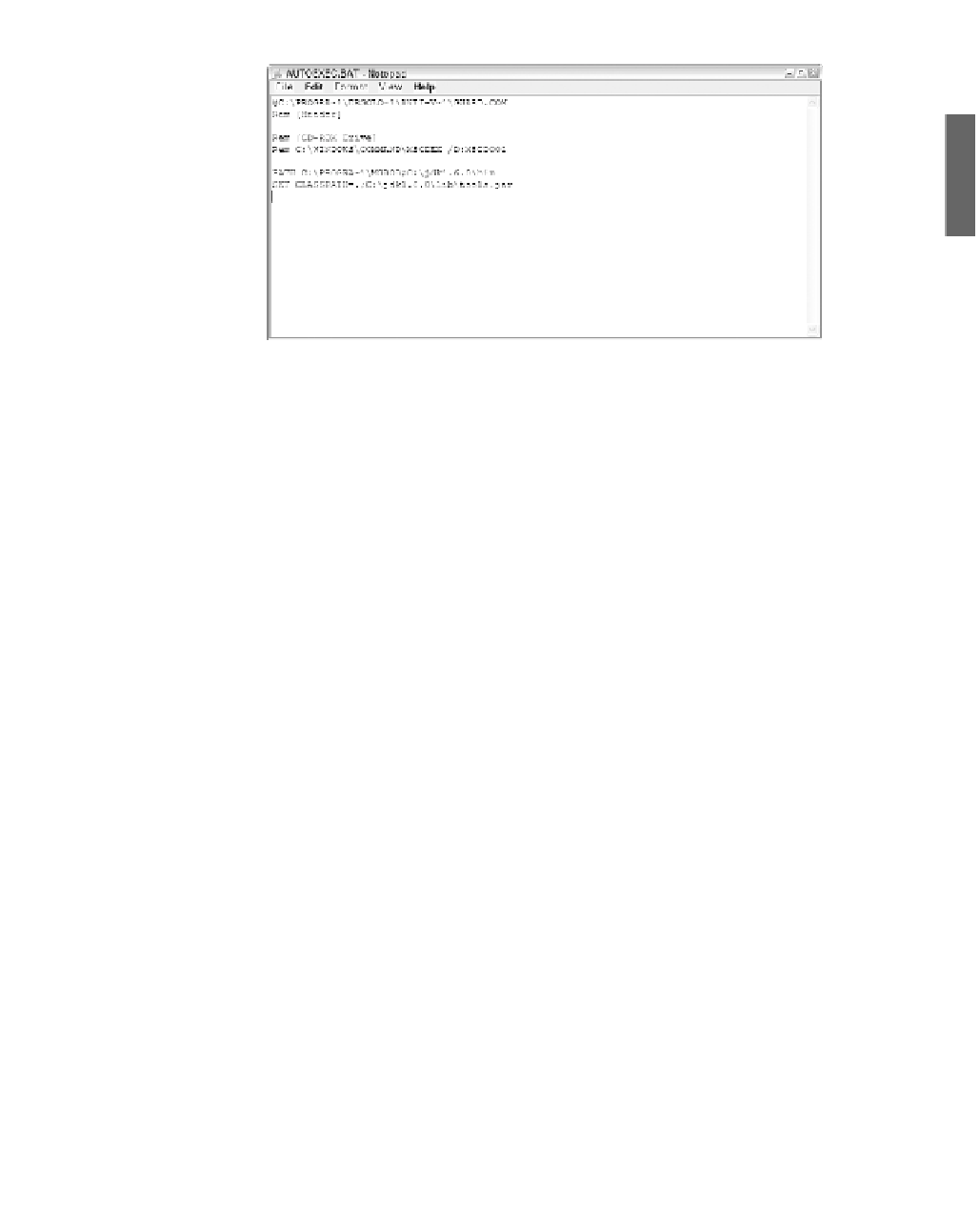Java Reference
In-Depth Information
FIGURE A.12
Editing your sys-
tem's environment
variables.
A
Look for a line in the file that contains the text
SET CLASSPATH=
command followed by a
series of folder and filenames separated by semicolons.
CLASSPATH
is used to help the Java compiler find the class files that it needs. The
SET
CLASSPATH=
command in Figure A.12 included two things with a semicolon between
them:
.
n
c:\jdk1.6.0\lib\tools.jar
n
A
CLASSPATH
can contain folders or files. It also can contain a period character (
“.”
),
which is another way to refer to the current folder in MS-DOS.
You can see your system's
CLASSPATH
variable by typing the following command at a
command line:
ECHO %CLASSPATH%
If your
CLASSPATH
includes folders or files that you know are no longer on your com-
puter, you should remove the references to them on the
SET CLASSPATH=
line in
AUTOEXEC.BAT
. Make sure to remove any extra semicolons also.
To set up the kit correctly, the file containing the Java class library must be included in
the
SET CLASSPATH=
command. This file has the filename
tools.jar
. If you installed the
kit in the
C:\Program Files\Java\jdk1.6.0
folder on your system,
tools.jar
is prob-
ably in the folder
C:\Program Files\Java\jdk1.6.0\lib
.
If you can't remember where you installed the kit, you can look for
tools.jar
by click-
ing Start, Find, Files or Folders from the Windows taskbar. If you find several copies,
you should be able to find the correct one using this method:


